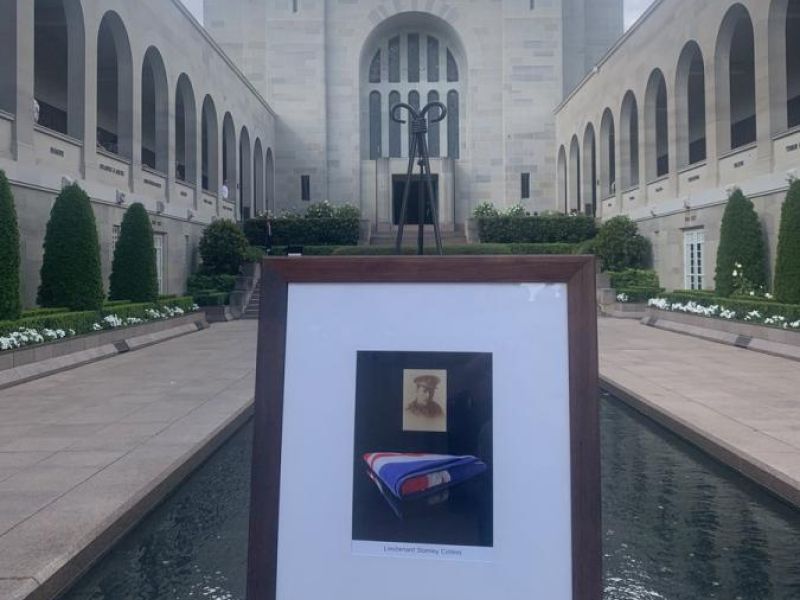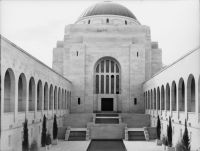Lieutenant Stanley Colless, 55th Australian Infantry Battalion, AIF
Stanley Colless was born in Penrith on 19 November 1892, the son of Henry and Elizabeth Colless. His father was a railway shunter and his mother a homemaker and caregiver to their nine children. Colless was the youngest of his siblings and received his education at Penrith Superior Public School. On completion of his studies he gained employment as a wool-classer with A.W. Davis Company in Liverpool, outside of Sydney. Colless was a keen sportsman, playing football and cricket as well as participating in recreational shooting.
Stanley Colless enlisted in the Australian Imperial Force on 19 June 1915 at the age of 23 and was assigned as a sergeant to the 9th Battalion. He departed Sydney aboard the troopship Argyllshire on 30 September, bound for the Egypt.
Colless reached Egypt in early 1916. He was promoted to sergeant-major and trained in operating the Lewis gun. He arrived in Egypt during a time of expansion for the AIF and was transferred to the 55th Battalion as part of this process.
The 55th Battalion arrived in France at the end of June 1916 and entered the frontline trenches in early July. A week later, the 55th entered their first major battle near the French village of Fromelles, on 19 July 1916.
An estimated 5,500 Australian casualties were sustained on the first day of the battle of Fromelles, which has been described as “the worst 24 hours in Australia’s entire history.”Colless survived the battle of Fromelles, was promoted to 2nd lieutenant, and awarded the Distinguished Conduct Medal. His citation read:
For conspicuous gallantry during operations he kept the teams of two guns working in the enemy’s second line from which he was finally driven out by overwhelming bombing parties. By his fine example he kept the teams steady and covered the retreat of his company, thus saving many casualties.
Colless then spent several months in England serving as a Lewis gun instructor. Re-joining his unit in late 1917, he was awarded the Military Cross for carrying out a successful raid on enemy machine-guns and pill boxes.
In late August 1918, Colless was once again in the firing line. The 5th Division was advancing on Peronne, a fortified town surrounded by ramparts and a moat. German forces blew up the main bridges leading across the moat, in an attempt to foil allied advances.
Australian troops fought found their way into the town, building a makeshift bridge from debris. The 55th was forced to withdraw from the bridge which was choked by traffic and were redirected to eliminate enemy resistance between Peronne and Mont St Quentin.
The operation was successful and Peronne was secured on 3 September 1918. General Sir Henry Rawlinson described the operation to capture the towns as “the finest single feat of the war”. Despite its success, the capture of Peronne came at a cost of more than 3,000 casualties. Among the dead was Lieutenant Stanley Colless.
Private Hubert Wade was serving with Colless in 1918 and recalled the moment at which the officer was killed:
I was beside him when he was hit by a machine gun bullet in the head. He fell at once on his side at the side of the trench and I believe he was killed instantly. He was an excellent officer, quite one of the best and was the most popular officer in the Battalion.
The Nepean Times acknowledged Colless’ death on 21 September 1918, saying
“We trust it will be a consolation to the deceased soldier’s parents and family in their anguish of spirit at his demise, to know that he died heroically, serving the cause of his God, country and civilisation.”
Colless was buried at Herbecourt British Cemetery near where he fell, aged 25.
- AWM Honour Roll https://www.awm.gov.au/collection/R1712467
- AWM Article https://www.awm.gov.au/articles/blog/lieutenant-stanley-colless

 Australian War Memorial
Australian War Memorial